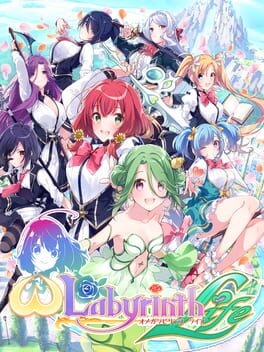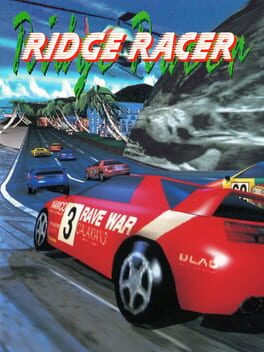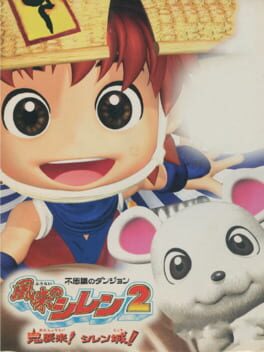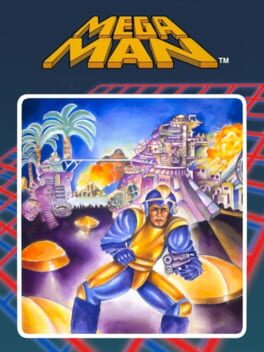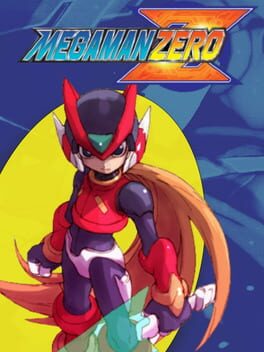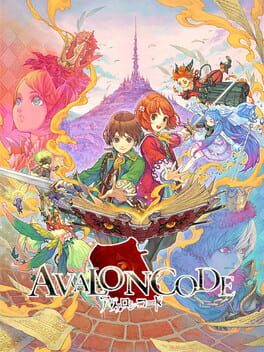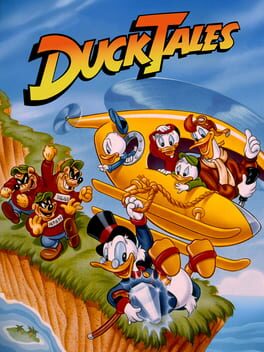Elephant_Parade
2019
1993
At first, I tried to play this game like it was Shiren 1: attacking the dungeon fresh every time with no items brought over from previous forays. Now, whereas Shiren 1 initially presents one dungeon, the epic 30-floor Table Mountain, Shiren 2 offers three, each gated behind the last: the 10-floor Shuten Trail Easy, the 13-floor Shuten Trail Medium, and the 15-floor Shuten Trail Hard. None of them are as good as Table Mountain—their environments aren't as diverse, their fixed floors aren't as gorgeous, they don't sell the journey as well—and Shuten Trail Hard lives up to its name; I spent a while bashing my head against it before I finished it, and I didn't entirely enjoy the process.
Shiren 1 was a hardcore item management sim with some crafting elements, but Shiren 2 leans more into crafting: you can fuse equipment together not only using fusion pots but also with a new enemy, the Mixer, who also lets you fuse equipment with consumable items to give it special effects. As a result, success depends a bit less on how well you manage your items and a bit more on how many broken effects you can stack on your sword—and when you're not guaranteed to find the items you need to do that, when you indeed might not find a sword at all for several floors, that makes the experience less enjoyable. And unlike in Shiren 1, beating the game requires you to clear these dungeons again and again and again as you gather resources to build your castle. Furthermore, carrying items between runs has gone from painful to trivial, with a much larger storehouse and more opportunities to stock it. (Technically it works the same way—following a successful run, you return to town with your inventory intact, giving you the opportunity to store everything—but in Shiren 1 a single successful run meant you had won the game, so there wasn't much point.)
But after clearing Shuten Trail Hard for the first time, I threw my "no external items" rule out the window and started bringing in everything. I brought so many consumables that dying was nearly impossible; I brought the same sword and shield into every trip, upgrading them until enemies could hardly scratch me and I could wipe them out in a single hit. And I had much more fun doing that—I enjoyed it almost as much as I did Shiren 1 (I still found repeatedly clearing the same dungeon a little repetitive, no escaping that). In Shiren 1, inter-run progression was a sideshow, but here it's the focus: building up your castle, building up your Katana+25, building friendships with the NPCs. And you can't just pretend it isn't.
The final dungeon, Onigashima, was a bit of a letdown: I once again tried to beat it without any items and didn't really enjoy it; and when I relented, I cleared it on my first try without any struggle. Anticlimactic!
The art and writing are also going for something completely different this time around: less mythic, more cartoony. I think the former is a slight downgrade: Shiren 1 is one of the best-looking games on SNES and Shiren 2 is merely very pretty. The latter is a matter of taste, since the biggest change is making the writing a focus at all, but I found the cutscenes funny (and incredibly well-directed, particularly the sequence after a successful Shuten Trail run where Shiren rafts triumphantly down the mountain with his new castle parts in tow).
The sountrack has a few too many Shiren 1 remixes, but it isn't as bad as Torneko 2, where every track was a Torneko 1 remix—which were all variations on the same motif to begin with!
I haven't played the postgame yet and I don't know if I will. I came away from Shiren 1's postgame frustrated—I couldn't beat the third postgame dungeon and I hated the second (the first was fine).
If you can accept Shiren 2 for what it is, it's a worthy sequel.
Shiren 1 was a hardcore item management sim with some crafting elements, but Shiren 2 leans more into crafting: you can fuse equipment together not only using fusion pots but also with a new enemy, the Mixer, who also lets you fuse equipment with consumable items to give it special effects. As a result, success depends a bit less on how well you manage your items and a bit more on how many broken effects you can stack on your sword—and when you're not guaranteed to find the items you need to do that, when you indeed might not find a sword at all for several floors, that makes the experience less enjoyable. And unlike in Shiren 1, beating the game requires you to clear these dungeons again and again and again as you gather resources to build your castle. Furthermore, carrying items between runs has gone from painful to trivial, with a much larger storehouse and more opportunities to stock it. (Technically it works the same way—following a successful run, you return to town with your inventory intact, giving you the opportunity to store everything—but in Shiren 1 a single successful run meant you had won the game, so there wasn't much point.)
But after clearing Shuten Trail Hard for the first time, I threw my "no external items" rule out the window and started bringing in everything. I brought so many consumables that dying was nearly impossible; I brought the same sword and shield into every trip, upgrading them until enemies could hardly scratch me and I could wipe them out in a single hit. And I had much more fun doing that—I enjoyed it almost as much as I did Shiren 1 (I still found repeatedly clearing the same dungeon a little repetitive, no escaping that). In Shiren 1, inter-run progression was a sideshow, but here it's the focus: building up your castle, building up your Katana+25, building friendships with the NPCs. And you can't just pretend it isn't.
The final dungeon, Onigashima, was a bit of a letdown: I once again tried to beat it without any items and didn't really enjoy it; and when I relented, I cleared it on my first try without any struggle. Anticlimactic!
The art and writing are also going for something completely different this time around: less mythic, more cartoony. I think the former is a slight downgrade: Shiren 1 is one of the best-looking games on SNES and Shiren 2 is merely very pretty. The latter is a matter of taste, since the biggest change is making the writing a focus at all, but I found the cutscenes funny (and incredibly well-directed, particularly the sequence after a successful Shuten Trail run where Shiren rafts triumphantly down the mountain with his new castle parts in tow).
The sountrack has a few too many Shiren 1 remixes, but it isn't as bad as Torneko 2, where every track was a Torneko 1 remix—which were all variations on the same motif to begin with!
I haven't played the postgame yet and I don't know if I will. I came away from Shiren 1's postgame frustrated—I couldn't beat the third postgame dungeon and I hated the second (the first was fine).
If you can accept Shiren 2 for what it is, it's a worthy sequel.
2018
1987
2002
TBD
A cute little game. The combat is nothing special (RPG Maker 95 says hi), but the world design is interesting: in dungeons and on the overworld, events are marked with an (!); touching them starts a battle, triggers a special event, or opens a location (usually the former). Battle events are once-only, so the effective random encounter rate is very high for unexplored areas but quite low for explored ones. In dungeons, unexplored tiles are blacked-out, so you can't see where the events are until you stumble across them. Unfortunately, the dungeons are pretty samey; they have different graphics, sure, but they don't feel different to explore.
The original art and some other cute touches elevate the experience.
The original art and some other cute touches elevate the experience.
1990
TBD
1993
2008
When you go to sleep, there's a chance you'll be woken up by a random heroine saying, "Who's this?" You have to identify them by their voice and pick them from a list; you get affection points with them if you're right, but they get mad at you if you're wrong. I played with the sound off, so they only ever got mad at me.
1993
Dragon Quest 1
I've previously dropped this game three times: once on NES after fiddling around a bit, once on SFC after hearing the English patch was buggy, and a second time on NES when the grind went from monotonous to torturous. It turned out that the secret recipe for finishing the game called for (1) a version of it with a content:grind ratio that can be represented as a whole number, (2) playing in Japanese so I can tell myself I'm practicing my reading, and (3) a little turbo for spice.
It's a solid enough game. The writing has these cute little flourishes: everyone talks about 「勇者ロト」, "the hero Lot," but in the message he left on his tombstone, he introduces himself as simply 「ロト」, "Lot."
It can't be overstated how many kindnesses this version* offers the player. Higher stats, more EXP and gold, stronger spells—it's gone from a brutal grindfest to something a mildly patient player could play without turbo (though the encounter rate grates). There is one change for the worse: movement is now performed in half-tile increments, despite the world (visually and collision-wise) still being made up of whole tiles. Why?
I'll probably play DQ2 eventually.
* I understand that this wasn't the first release to make these changes.
I've previously dropped this game three times: once on NES after fiddling around a bit, once on SFC after hearing the English patch was buggy, and a second time on NES when the grind went from monotonous to torturous. It turned out that the secret recipe for finishing the game called for (1) a version of it with a content:grind ratio that can be represented as a whole number, (2) playing in Japanese so I can tell myself I'm practicing my reading, and (3) a little turbo for spice.
It's a solid enough game. The writing has these cute little flourishes: everyone talks about 「勇者ロト」, "the hero Lot," but in the message he left on his tombstone, he introduces himself as simply 「ロト」, "Lot."
It can't be overstated how many kindnesses this version* offers the player. Higher stats, more EXP and gold, stronger spells—it's gone from a brutal grindfest to something a mildly patient player could play without turbo (though the encounter rate grates). There is one change for the worse: movement is now performed in half-tile increments, despite the world (visually and collision-wise) still being made up of whole tiles. Why?
I'll probably play DQ2 eventually.
* I understand that this wasn't the first release to make these changes.
1989
>play first level
>finally reach a checkpoint after god knows how many deaths to cheap-ass bees
>guy offers to take me back to base
>accept to see what it does
>he takes me back to the hub and I have to start the level over with no benefit except respawning the seemingly useless money pickups (there's like 150K worth)
>why does he even exist
>game over and lose my money anyway (no saving)
>reach checkpoint again
>ignore the guy this time
>two screens later, a giant statue tells me I need to pay it 300K to pass, twice as much as is in the level
dropped
>finally reach a checkpoint after god knows how many deaths to cheap-ass bees
>guy offers to take me back to base
>accept to see what it does
>he takes me back to the hub and I have to start the level over with no benefit except respawning the seemingly useless money pickups (there's like 150K worth)
>why does he even exist
>game over and lose my money anyway (no saving)
>reach checkpoint again
>ignore the guy this time
>two screens later, a giant statue tells me I need to pay it 300K to pass, twice as much as is in the level
dropped
